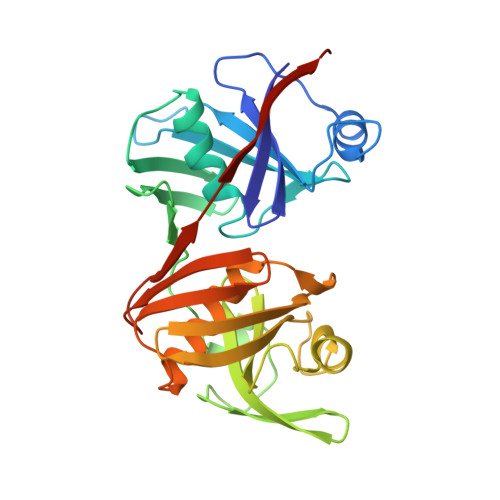Dimerization of bacterial diaminopimelate epimerase is essential for catalysis
Hor, L., Dobson, R.C.J., Downton, M.T., Wagner, J., Hutton, C.A., Perugini, M.A.(2013) J Biological Chem 288: 9238-9248
- PubMed: 23426375
- DOI: https://doi.org/10.1074/jbc.M113.450148
- Primary Citation of Related Structures:
4IJZ, 4IK0 - PubMed Abstract:
Diaminopimelate (DAP) epimerase is involved in the biosynthesis of meso-DAP and lysine, which are important precursors for the synthesis of peptidoglycan, housekeeping proteins, and virulence factors in bacteria. Accordingly, DAP epimerase is a promising antimicrobial target. Previous studies report that DAP epimerase exists as a monomeric enzyme. However, we show using analytical ultracentrifugation, X-ray crystallography, and enzyme kinetic analyses that DAP epimerase from Escherichia coli exists as a functional dimer in solution and the crystal state. Furthermore, the 2.0-Å X-ray crystal structure of the E. coli DAP epimerase dimer shows for the first time that the enzyme exists in an open, active conformation. The importance of dimerization was subsequently probed by using site-directed mutagenesis to generate a monomeric mutant (Y268A). Our studies show that Y268A is catalytically inactive, thus demonstrating that dimerization of DAP epimerase is essential for catalysis. Molecular dynamics simulations indicate that the DAP epimerase monomer is inherently more flexible than the dimer, suggesting that dimerization optimizes protein dynamics to support function. Our findings offer insight into the development of novel antimicrobial agents targeting the dimeric antibiotic target DAP epimerase.
- Department of Biochemistry, La Trobe Institute for Molecular Science, La Trobe University, Melbourne, Victoria 3086, Australia.
Organizational Affiliation:

















